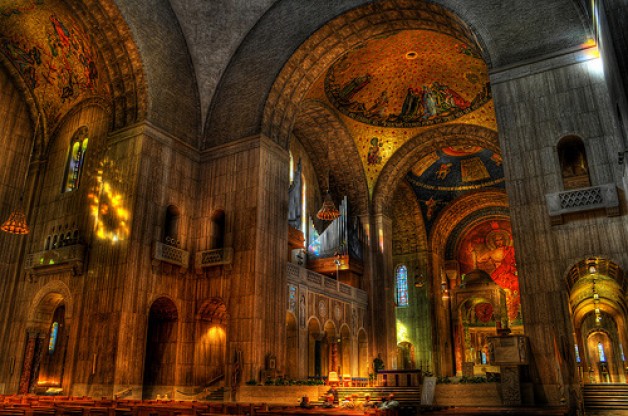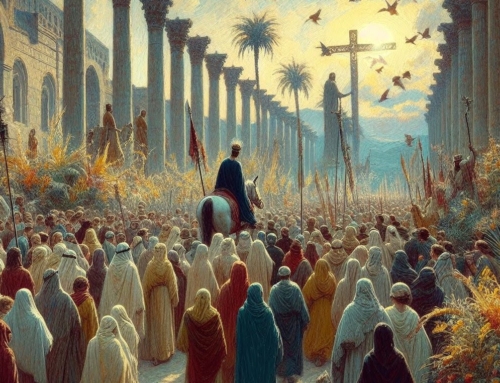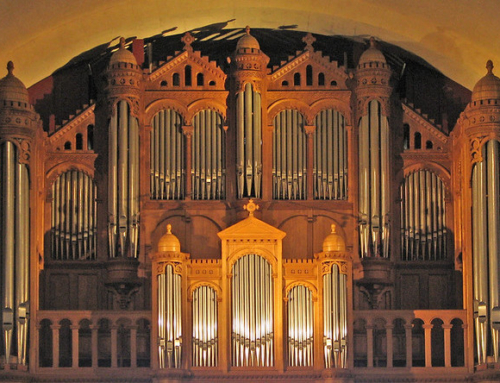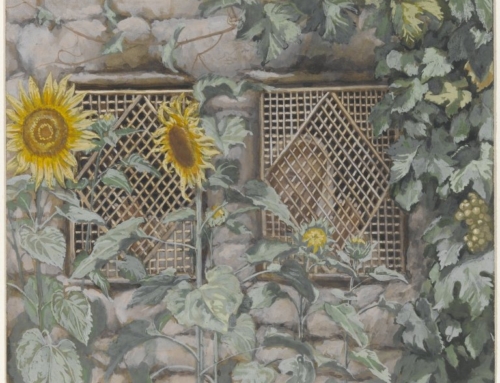Those of us who are in our first year of simple vows here at the Dominican House of Studies have just been assigned to new ministries in the Washington, D.C. area. These ministries vary widely. Some brothers run a parish youth group; others work with the Missionaries of Charity; still others visit the elderly at nursing and assisted care facilities. Most of our assignments require a certain amount of travel, but one of them—that of tour guide at the Basilica of the National Shrine of the Immaculate Conception—is just across the street.
While it’s certainly a short commute, this ministry requires a great deal of preparation. One must learn a seemingly endless amount of information about the Basilica, its various chapels, its artwork, etc. Recently, Br. Louis Bertrand Lemoine, a novitiate classmate of mine, was assigned to be a tour guide, and, to prepare for his new job, he offered a private tour of the Basilica, which I had the pleasure of attending.
The Basilica is an immense structure. It is among the ten biggest Catholic churches in the world. Confessions are heard for over five hours a day, almost every day of the year. Daily Mass, adoration of the Blessed Sacrament, pilgrimages: the list goes on and on. The Basilica’s mission statement explains that it is a place for “deepening conversion, a step forward in the journey to God, with Mary as the model for that journey.”
In other words, the Basilica—both the physical building and what happens inside—is meant to lead people to God. The same is true for any church. When we step into a church we leave this world behind in order to praise our Creator and encounter him in the sacraments. As broken human beings, we come into a church to meet the divine and, in that meeting, receive healing and salvation. In the silence of sacred time and space we encounter our Lord Jesus Christ, and our hearts are converted.
In the way that it facilitates all of these things, the Basilica is a marvelous example of what a church should be. In addition, it is a beautiful symbol of the universal Church. Its many chapels, dedicated to Catholics from around the world, reflect the wide embrace, the rich diversity-in-unity, of Holy Mother Church—particularly as exemplified in the United States. For those of us who are just beginning our Dominican lives, it is both inspiring and humbling to meditate on this majestic “portrait” of the Body of Christ, and to ponder the place of a Dominican friar within it. What a privilege and what a responsibility it is to preach for the salvation of souls, to follow in the footsteps of St. Dominic and so many other great saints, whose love continues to show Christ to the world.
✠
Image: Basilica of the National Shrine of the Immaculate Conception







